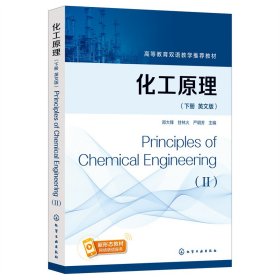
化工原理(郑大锋)(英文版,下册)Principles of Chemical Engineeri
正版新华书店直发可开发票,支持7天无理由
¥ 69.4 7.8折 ¥ 89 全新
库存4件
作者郑大锋、甘林火、严明芳 主编
出版社化学工业出版社
ISBN9787122350466
出版时间2023-01
装帧平装
开本16开
定价89元
货号1202820233
上书时间2024-03-28
- 在售商品 暂无
- 平均发货时间 18小时
- 好评率 暂无
- 最新上架
商品详情
- 品相描述:全新
- 商品描述
-
前言
随着我国卓越工程师教育培养计划的实施和“一带一路”倡议的推进,培养具有国际化视野和国际竞争能力的卓越工程人才已经成为我国工程教育改革的热点。实施全英文教学是培养具有国际化视野卓越工程人才的关键,而与课程配套的全英文教材是顺利实施全英文教学的保障。同时,“一带一路”沿线国家到我国留学的学生日益增多,为这些学生提供合适的化工原理教材也是值得关注的问题。为此,我们根据制定的《普通高等学校本科专业类教学质量国家标准》中化工类专业知识体系,以及服务国际化教学需求,编写了此套化工原理英语教材。
本书的主要内容以化学工程应用为背景,以化工单元操作为主线,将动量、热量与质量传递的原理融合到化工原理及单元操作过程,参考与借鉴不同版本的化工原理教材和第七版的Unit Operations of Chemical Engineering,重点介绍化工单元操作的基本原理、典型设备结构特征及其计算。在内容编排上力求系统完整,注重理论与工程实际相联系。
本书可作为化学工程、石油化工、生物工程、食品工程、环境工程、制药工程、材料、纺织、冶金、化工装备及控制工程、应用化学、精细化工、轻工造纸等学科化工原理课程的本科生教材,也可供从事化学工程及相关领域教学、科研、设计和生产的工程技术人员参考。
全书分上、下两册,由华南理工大学组织编写,上册由郑大锋统稿,下册由郑大锋、严明芳统稿。
上册由郑大锋、龙新峰、钟理主编,其中Introduction、Chapter 1、Chapter 2由郑大锋、钟理编写;Chapter 3由马四朋编写;Chapter 4、Chapter 5、附录由龙新峰编写。
下册由郑大锋、甘林火、严明芳主编,其中Chapter 1、Chapter 2由广东药科大学严明芳编写;Chapter 3、Chapter 4、Chapter 6由华侨大学甘林火编写;Chapter 5由郑大锋、伍钦编写。
本书语言文字由University of Huddersfield应用科学系的Karl Ramm博士和Chenyu Du教授修改并审定,音频资料由Karl Ramm博士录制。
本书得到了华南理工大学教务处、化学与化工学院的大力支持,被评为“校级精品教材建设项目”。编写过程中还得到编者同事和化学工业出版社编辑的热心帮助与支持。华南理工大学研究生钟定明、刘倩、谭振荣和华侨大学研究生常龙君也参加了文字整理工作。谨在此一并表示衷心的感谢。
鉴于编者水平所限,书中难免存在疏漏,希望读者不吝指正,使本书在使用过程中不断得到改进和完善。
编者
2022年3月于广州
商品简介《化工原理》(上、下册,英文版)是根据制定的《普通高等学校本科专业类教学质量国家标准》中化工类专业知识体系和服务国际化教学需求而编写的英语教材。本书借鉴了美国Warren L.McCabe、Julian C.Smith和Peter Harriott主编的Unit Operations of Chemical Engineering教材,并结合我国高等化工教育的实际和特色,以工程应用为背景,强调理论联系实际,注重培养学生的知识运用能力和工程观点。本书以物料衡算、能量衡算、物系平衡和过程速率4个基本概念为基础,介绍了主要化工单元操作基本原理、“三传”过程、计算方法及典型单元设备。全书分上、下两册,上册包括:Introduction、Fluid Flow、Fluid Transportation Machinery、Heterogeneous Separation、Heat Transfer and Heat Exchange Equipment、Evaporation和Appendix;下册包括:Introduction to Mass Transfer Processes、Gas Absorption、Distillation、Liquid-liquid Extraction、Drying和Other Types of Mass Transfer Separation Processes。本书配有名词术语和难句的诵读,读者可扫描封底二维码获取音频。本书可作为高等学校化工原理英语课程的教材,也可供来华留学生和有意出国深造的学生学习使用。
目录Chapter 1 Introduction to Mass Transfer Processes 1
1.1 Mass Transfer Processes 1
1.1.1 Mass Transfer and Other Separation Methods 1
1.1.2 Representation of Phase Compositions 4
1.2 Mass Transfer Theories 7
1.2.1 Molecular Diffusion 7
1.2.2 Mass Transfer in a Single Phase 17
1.2.3 Mass Transfer between Phases 19
Words and Expressions 22
Notes 22
Calculation Exercises 24
Short Assay Exercises 24
Chapter 2 Gas Absorption 25
2.1 Introduction 25
2.1.1 Gas Absorption Processes 25
2.1.2 Absorbent Selection 27
2.1.3 Classification of Gas Absorption 27
2.2 Gas-liquid Equilibrium of Absorption 28
2.2.1 Solubility of Gas in Liquid 28
2.2.2 Henry's Law 29
2.2.3 Application of Phase Equilibrium Relation in Absorption Processes 33
2.3 Absorption Rate Equations 35
2.3.1 Film Absorption Rate Equations 35
2.3.2 Overall Absorption Rate Equations 38
2.3.3 Application Specifications of Absorption Rate Equations 41
2.4 Design Calculations for Absorption (or Desorption) Columns 42
2.4.1 Material Balance and Operating Line Equations 42
2.4.2 Determination of Absorbent Dosage 44
2.4.3 Calculation of Columns' Required Diameter 47
2.4.4 Calculation of Packed Layer Height 47
2.5 Absorption Coefficients 57
2.5.1 Determination of Absorption Coefficients 58
2.5.2 Empirical Equations for Absorption Coefficients 59
2.5.3 Characteristic Number Correlation Equations of Absorption Coefficients 60
2.6 Desorption and Other Absorption Processes 64
2.6.1 Desorption or Stripping 64
2.6.2 Absorption from Rich Gases 66
2.6.3 Absorption with Chemical Reactions 68
2.7 Packed Columns 69
2.7.1 Characteristic Parameters and Types of Packings 69
2.7.2 Hydrodynamic Properties of Packed Columns 75
Words and Expressions 81
Notes 81
Calculation Exercises 83
Short Assay Exercises 84
Chapter 3 Distillation 85
3.1 Introduction 85
3.2 Vapor-liquid Equilibrium of Binary Solutions 86
3.2.1 Raoult's Law for Ideal Solutions 86
3.2.2 Relative Volatility of Vapor-liquid Systems 86
3.2.3 Vapor-liquid Equilibrium Phase Diagrams of Ideal Binary Systems 87
3.2.4 Vapor-liquid Equilibrium Phase Diagrams of Non-ideal Binary Systems 89
3.3 Flash Distillation and Simple Distillation 91
3.3.1 Flash Distillation 91
3.3.2 Principles and Calculations of Simple Distillation 94
3.4 Principles and Processes of Continuous Distillation 97
3.4.1 Principles of Distillation 97
3.4.2 Distillation Columns and Operating Processes of Distillation 99
3.5 Design of Continuous Distillation Columns for Binary Mixtures 101
3.5.1 Concept of Ideal Plates and Hypothesis of Constant Molar Flow 102
3.5.2 Material Balance and Operating Line Equations 103
3.5.3 Effects of Feed Conditions and q Line 107
3.5.4 The Number of Ideal Plates 111
3.5.5 Special Cases for Calculation of Ideal Plates 116
3.5.6 Selection and Influence of the Reflux Ratio 126
3.5.7 Short-cut Method for Calculation of the Number of Ideal Plates 132
3.5.8 Plate Efficiency and Actual Plates 135
3.5.9 Process Calculations of Reboilers and Condensers 138
3.5.10 Operation Analysis of Distillation Columns 143
3.6 Batch Distillation for Binary Mixtures 146
3.6.1 Processes and Characteristics of Batch Distillation 146
3.6.2 Calculation of Batch Distillation with Overhead Distillate at Constant Composition 146
3.6.3 Calculation of Batch Distillation with Constant Reflux Ratio 149
3.7 Special Distillation 151
3.7.1 Azeotropic Distillation 151
3.7.2 Extractive Distillation 153
3.7.3 Molten Salt Distillation and Salt Extraction Distillation 154
3.8 Plate Columns 155
3.8.1 Plate Column Equipment 155
3.8.2 Plate Types and Fluid Flow Phenomena on Plates 157
Words and Expressions 161
Notes 162
Calculation Exercises 164
Short Assay Exercises 168
Chapter 4 Liquid-liquid Extraction 169
4.1 Phase Equilibrium 170
4.1.1 Liquid-liquid Equilibrium 170
4.1.2 Effects of Temperature on Phase Equilibrium 177
4.1.3 Representation of Extraction Processes in Triangular Phase Diagram 178
4.1.4 Selection of Extractants 180
4.2 Calculations for Extraction 184
4.2.1 Calculations for Single-stage Extraction 184
4.2.2 Calculations for Multistage Cross-current Extraction 188
4.2.3 Calculations for Multistage Counter-current Extraction 194
4.3 Liquid Extraction Equipment 202
4.3.1 Mixer-settler 203
4.3.2 Column Extraction Equipment 205
4.3.3 Centrifugal Extraction Equipment 208
4.3.4 Fluid Flow and Mass Transfer Characteristics of Liquid-liquid Mass Transfer Equipment 209
4.3.5 Selection of Extraction Equipment 213
Words and Expressions 214
Notes 214
Calculation Exercises 216
Short Assay Exercises 219
Chapter 5 Drying 220
5.1 Introduction 220
5.1.1 Purposes of Drying 220
5.1.2 Methods of Drying 220
5.1.3 Factors Affecting Drying Processes 221
5.2 Nature of Wet Air and Wet Materials 223
5.2.1 Nature of Wet Air 223
5.2.2 Enthalpy-humidity Diagram of Wet Air and Its Applications 231
5.3 Properties of Wet Materials 235
5.3.1 Moisture Content of Materials 235
5.3.2 Classification of Wet Materials 236
5.3.3 Combined State of Material and Moisture 237
5.4 Material Balance and Energy Balance in Drying Processes 240
5.4.1 Material Balance 240
5.4.2 Energy Balance 241
5.4.3 State Change of Air Passing Through Dryers 244
5.4.4 Heat Efficiency and Energy Saving of Dryers 249
5.5 Drying Kinetics 252
5.5.1 Drying Kinetics Test 253
5.5.2 Calculation of Drying Time 256
5.6 Dryers 263
5.6.1 Classification of Dryers 263
5.6.2 Van Dryers and Tunnel Dryers 264
5.6.3 Rotary Dryers 268
5.6.4 Belt Dryers 270
5.6.5 Drum Dryers 272
5.6.6 Spray Drying 274
5.6.7 Fluidized Bed Drying 277
5.6.8 Airflow Drying 281
5.6.9 Microwave and High Frequency Drying 283
Words and Expressions 285
Notes 285
Calculation Exercises 287
Short Assay Exercises 289
Chapter 6 Other Types of Mass Transfer Separation Processes 290
6.1 Membrane Separation 290
6.1.1 Separation Membrane and Membrane Modules 290
6.1.2 Membrane Separation Processes 292
6.2 Supercritical Fluid Extraction 299
6.2.1 Supercritical Fluids 299
6.2.2 The Extraction Processes of SFE 301
6.2.3 Applications of Supercritical Fluid Extraction 302
6.3 Adsorption 303
6.3.1 Adsorption Processes 303
6.3.2 Adsorbents 304
6.3.3 Adsorption Isotherms 305
6.3.4 Adsorption Rate 307
6.3.5 Fixed-bed Adsorption 308
Words and Expressions 310
Notes 310
Short Assay Exercises 311
Main References 312
Exercise Answers 313
【前言】
相关推荐
-
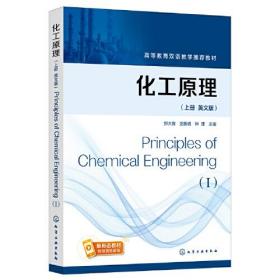
化工原理(郑大锋)(英文版上册)PrinciplesofChemicalEngineering(I)
全新广州
¥ 64.13
-

化工原理(郑大锋)(英文版,下册)PrinciplesofChemicalEngineering(II)
全新广州
¥ 64.13
-
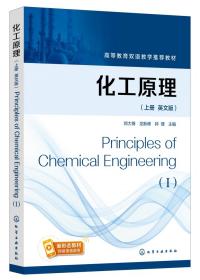
化工原理(郑大锋)(英文版上册)PrinciplesofChemicalEngineering(I)
全新广州
¥ 79.67
-
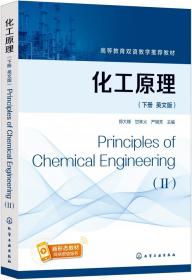
化工原理(郑大锋)(英文版,下册)PrinciplesofChemicalEngineering(II)
全新广州
¥ 79.67
-

化工原理(郑大锋)(英文版,下册)PrinciplesofChemicalEngineering(II)
全新广州
¥ 68.12
-
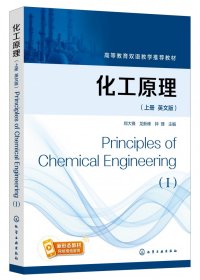
化工原理(郑大锋)(英文版上册)PrinciplesofChemicalEngineering(I)
全新北京
¥ 68.40
-
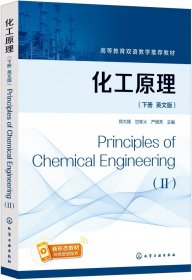
化工原理(郑大锋)(英文版,下册)PrinciplesofChemicalEngineering(II)
全新北京
¥ 68.40
-

化工原理(郑大锋)(英文版,下册)PrinciplesofChemicalEngineering(II) 9787122350466
全新天津
¥ 68.37
-

化工原理(郑大锋)(英文版上册)PrinciplesofChemicalEngineering(I) 9787122410306
全新天津
¥ 68.37
-
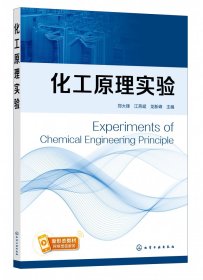
化工原理实验(郑大峰)
全新广州
¥ 28.20
— 没有更多了 —


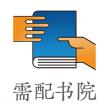

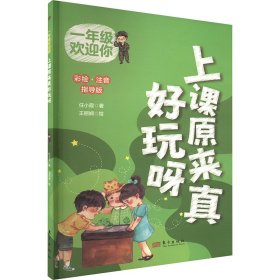

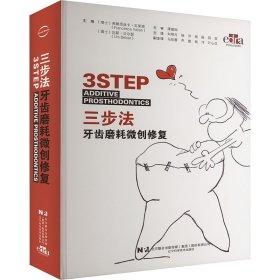
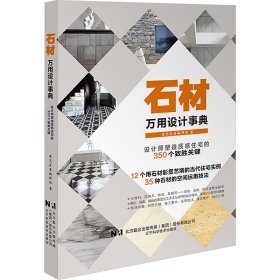
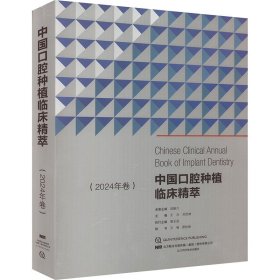
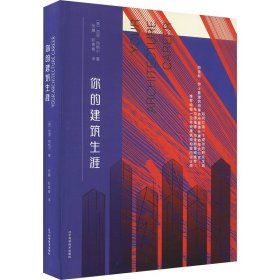
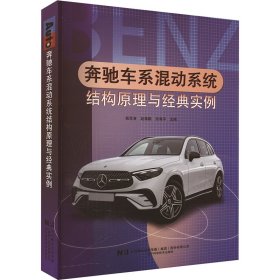


以下为对购买帮助不大的评价